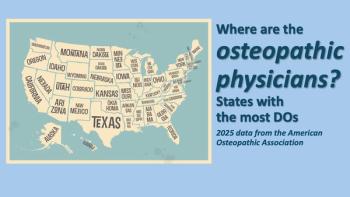
Scribes can provide numerous benefits to medical practices
Scribe use increases revenue while reducing provider burnout, studies show
Health care has become a shifting, dynamic landscape that can be difficult to predict. With
Scribes have always been a part of a comprehensive care team, but their use has skyrocketed in the wake of staffing shortages. Medical scribes can support providers by documenting encounters, providing appointment prep, entering orders, reviewing patient files, and managing patient flow. Well suited to supporting any health care professional, medical scribes help streamline workflow and improve quality of care. Their multidimensional skill set and medical expertise make them a critical addition to any team.
Regardless of practice size, medical scribes can bolster provider satisfaction and reduce care team burnout. When scribes tackle the bulk of administrative tasks, providers get more time to engage with patients and focus on their core competencies. This enables practices to see more patients while providing better care. A study published in the Journal of Graduate Medical Education found that using medical scribes increased physician productivity by 13%. The Medical Group Management Association (MGMA) reports that practices using medical scribes can see a return on investment of up to $22 for every dollar invested in the scribe program.
Not convinced? There’s more data. A 2018 study,
The demand for medical scribes has driven innovations in the industry, introducing both virtual and AI solutions for documentation. These modern modalities make scribes more accessible to practices who can build workflows based on when and where they need help. Virtual scribes work within the electronic health record (EHR) in real time but join consultations by either audio or video. This can put wary patients more at ease and is a cost-effective solution for providers whose scribe needs are less frequent or don’t require full staffing.
While AI-enabled scribe solutions are gaining popularity, the actual service varies. Some companies promise that their app alone can cure all the clinical documentation problems facing your practice. The reality is that automatic transcription hasn’t evolved enough to stand alone. The most effective AI scribe applications combine the asynchronous ease of use of AI with the quality assurance benefits of a highly-trained medical scribe to deliver timely and accurate notes.
By employing trained professionals to focus entirely on the administrative side of visits, scribe work reduces documentation errors, resulting in even more savings and further improving patient outcomes. Streamlining workflow can be especially important in large practices or hospitals where patient care can become difficult to manage. But regardless of practice size, the impact of medical scribes is undeniable. According to
So how do you add medical scribes to your care team without impacting care during the transition? Medical scribes enhance your care team by enabling doctors and nurses to focus their efforts on top-of-license tasks. Developing a good working relationship with scribes will increase rapport and productivity across your team. Any time there is an evolution in workflow, effective change management is critical for success. Before employing scribes, ensure that your system has the necessary infrastructure to effectively incorporate scribes.
Any time you add a member to your team, it's important to find someone with the right experience and abilities. Sourcing scribes is no different. Adding a scribe will provide immediate relief to your administrative woes. But the ROI of medical scribes directly correlates with their training and skills. You’ll want to find new team members who are well-trained, experienced with your EHR and specialty, and ready to provide value from their first shift. Working with a trusted vendor will reduce costs and hassle, and dramatically reduce your implementation time.
With the administrative burden on physicians reduced, your focus can be where it belongs: on the patient. A successful scribe program isn’t anecdotal. Real change comes with real metrics both in reduced time on computers, increased patient visits, and increased revenue.
As health care systems continue to evolve, the use of medical scribes will become even more widespread. The careers site Zippia
Brian Hudson is executive vice president, sales and marketing with
Newsletter
Stay informed and empowered with Medical Economics enewsletter, delivering expert insights, financial strategies, practice management tips and technology trends — tailored for today’s physicians.


















